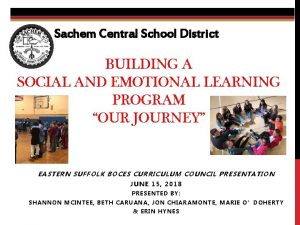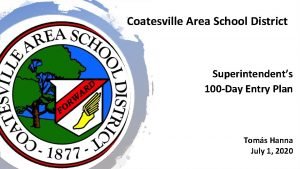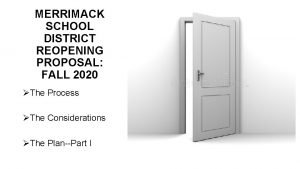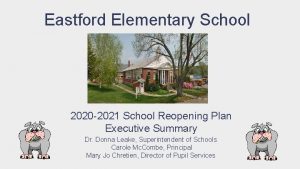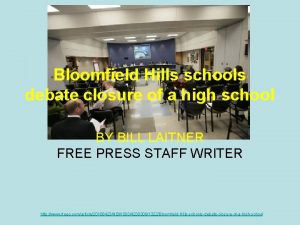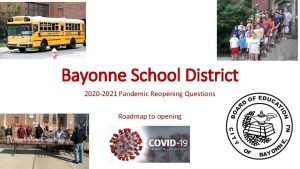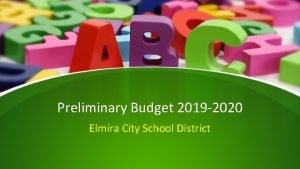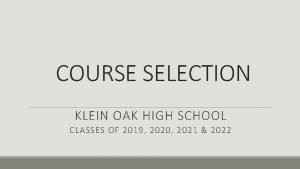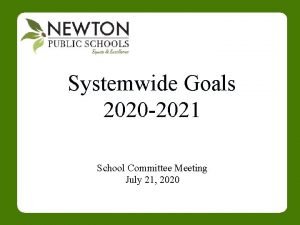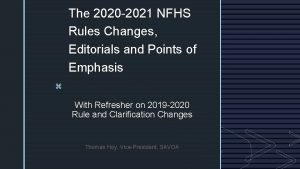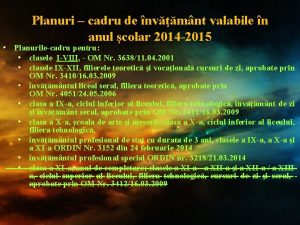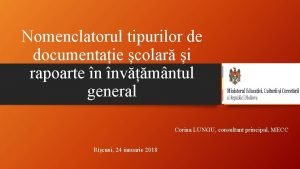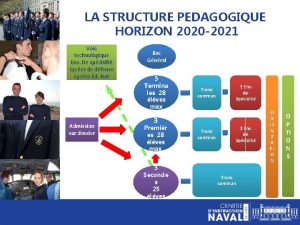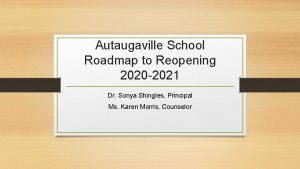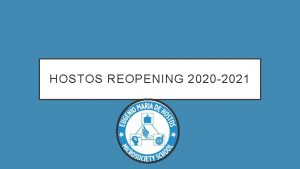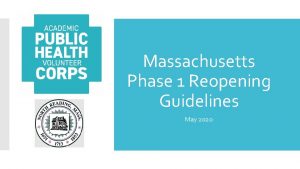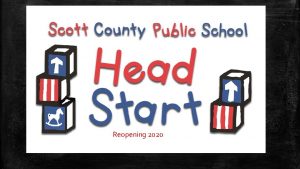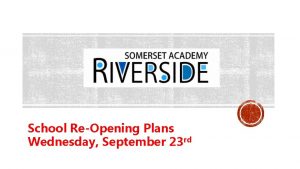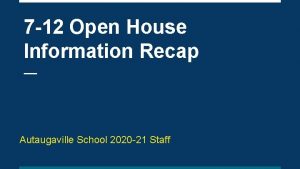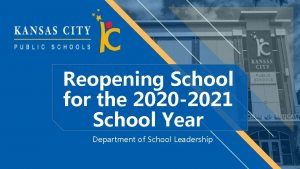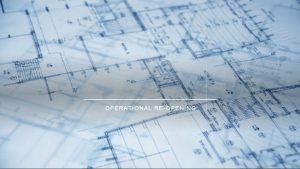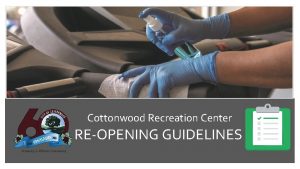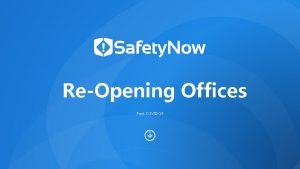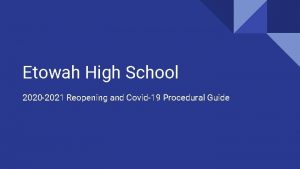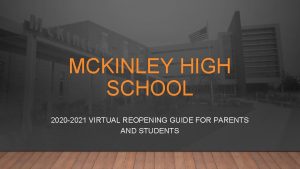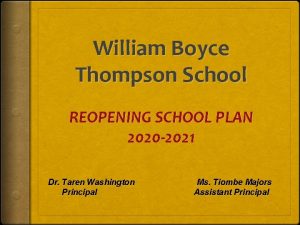Autaugaville School Roadmap to Reopening 2020 2021 Dr






















- Slides: 22

Autaugaville School Roadmap to Reopening 2020 -2021 Dr. Sonya Shingles, Principal Ms. Karen Morris, Counselor

Autaugaville School Roadmap to Reopening This document provides guidance for Autaugaville School in reopening schools for the 2020 -2021 school year in the midst of the COVID-19 pandemic. This document follows guidance by the Alabama State Department of Education and the Autauga County Roadmap to Opening Schools. Guiding Principles These five principles are set forth by the ALSDE. q q q We will be transparent. We will share what we know and what we don’t know and be clear about what we can control and what is outside of our control. We will be equitable. We will center decisions on what is best for ALL students, families, and educators. We will listen. We will bring together devise stakeholders and experts to understand realities on the ground and to surface creative solutions. We will put safety first. We will leverage data and public health leadership to inform the choices we make. We will be decisive. Given the size and scope of the challenge, we must move deliberately and make tough choices. We may need to adapt and if so, we will adapt quickly. *Focus areas of Wellness, Operations & Facilities, and Instruction & Technology are embedded throughout this document. They are addressed through communication, prevention protocols, student transportation, entry/exit of school campus, breakfast/lunch meals, transitions, large group gatherings, student learning environment and pedagogy, physical education and physical activity, vulnerable populations, staff or student illness at school, and health services. DISCLAIMER: This plan/guidance is intended to offer Autaugaville School stakeholders and student/families guidance in the reopening of the 2020 -2021 school year in an effort to prevent and slow the spread of COVID-19 on its local school campus, facilities, and school buses. Adherence to this plan/guidance does not guarantee the prevention and/or spread of the disease. This document does not, and is not intended to constitute legal advice or other professional advice. This plan is provided for informational and educational purposes only.

Roadmap Plan/Guidance • Autaugaville School (AS) is providing recommended strategies that will be utilized/implemented to protect the health of staff and students-minimize the spread of COVID-19. • Strategies are divided into three categories: Essentials (required by law, policy, or governmental order, or critical practice) , Guidance (best practices from research and long-term experience-highly recommended for implementation when feasible), and Consideration (additional best practices informed from emerging research, recent studies, and practical experience to be considered for implementation when feasible). *Note: (S 2, S 3, etc. - means same title but additional information) The Autauga County Board of Education has the authority and flexibility to close school buildings and utilize virtual learning as needed.

Communication • Utilize a variety of communication tools: School Messenger (Principal/Counselor), Websites (District/School), Newsletters, etc. • Establish COVID-19 Task Force comprised of diverse stakeholders to provide input regarding the development and implementation of the Autaugaville School Roadmap to Reopening • Communicate with families on how to identify COVID-19 symptoms that indicate students must stay at home and encourage families to self-report symptoms to health care officials • Post information on school website, on campus, and in classrooms, restrooms, etc. to communicate how to stop the spread , COVID-19 symptoms, preventative measures (including stay at home when sick), good hygiene, and school/district specific protocols • Post signage on buses and in car pool areas to communicate how to stop the spread, COVID-19 symptoms, preventative measures (including staying home when sick), good hygiene, and school/district specific protocols

Prevention Protocols • Install touch-free hand-sanitizing stations in several designated areas • Ensure all restrooms are equipped with working dispensers for soap, paper towels, and hand dryers (ensure adequate supply of soap and paper towels) • Teach and reinforce good hygiene measures such as handwashing, covering coughs, and wearing face masks/coverings- teachers/students MUST wear masks while transitioning from class to class, P. E. , lunch, etc. • Provide hand soap and hand sanitizer for frequently trafficked areas • Post signage in classrooms, hallways, restrooms, entrances, and where masks are required to communicate how to stop the spread, COVID-19 symptoms, preventative measures (including staying at home when sick), good hygiene, and school/district specific protocols • AS custodians will clean/disinfect (utilizing guidelines from the CDC and OSHA frequently touched surfaces and shared objects DAILY-custodians provided with a disinfectant backpack as well.

Prevention Protocols (S 2) • Provide masks and other PPE to staff • Allow students and staff to bring hand sanitizer and face masks/coverings to use from home. • Allow students to bring water bottles from home • Install plastic (personal dividers) or glass barriers in office, classrooms, etc. ü Screening of Staff and Students/Implement a three-pronged approach: 1. ) Home (communicate to families that home is the initial point of screening each day), 2) Transportation (post signage on buses that any student with COVID-like symptoms may not be transported to school/post signage near car pool areas indicating any student with COVID-like symptoms may not be dropped off at school, and 3. ) School (train staff in visual screening of students-appearance: flushed cheeks , lack of pallor in checks, etc. )

Student Transportation • Post signage on buses that any student with COVID-like symptoms may not be transported to school/post signage near car pool areas indicating any student with COVID-like symptoms may not be dropped off at school • Place floor decals or tape to indicate where students should sit and to mark 6 feet distances in designated areas • Provide hand sanitizer for students arriving to school and boarding the school bus-- • Students must wear face mask/covering upon arriving to school and boarding the school bus • Assign spaced seating, requiring siblings/members of the same household to sit together • Eliminate field trips • Communicate student/family the responsibilities at bus stop and on the bus ride • Establish a protocol for loading/unloading students to minimize congregation: dismiss by classroom and grade level Bus Riders/Rear of the School : K-6 students will report to homeroom and 7 -12 students will report to 1 st period, once unloading the bus, starting at 7: 15. Students traveling to PHS/ACTC in the A. M. will report immediately to the cafeteria for breakfast (will remain in cafeteria until 7: 30). Dismissal will occur by grade levels (students will remain in classroom). Car Riders/Front of the School: K-6 students will report to homeroom and 7 -12 students will report to 1 st period, once unloading the car, starting at 7: 15. Students traveling to PHS/ACTC in the A. M. will report immediately to the cafeteria for breakfast (will remain in cafeteria until 7: 30). Dismissal will occur by grade levels (students will remain in classroom). ~If you have chosen the Virtual Learning Setting, you MUST transport your child to the school , if necessary. This includes Extracurricular Activities and any classes at PHS or ACTC. ~

Entry/Exit School Campus • Post signage near car pool areas indicating any student with COVID-like symptoms may not be dropped off at school • Post signs at all entrances informing all who enter that they must: 1. ) not enter if they have a cough or fever, 2. ) maintain a minimum of 6 feet distance from one another, 3. ) visitors/parents MUST wear a mask/covering, and 4. ) refrain from shaking hands or engaging in any unnecessary physical contact • Place hand-sanitizing stations at all entrances of the building and other designated common areas • Post signage in classrooms, hallways, restrooms, entrances, and where masks are required to communicate how to stop the spread, COVID-19 symptoms, preventative measures (including staying at home when sick), good hygiene, and school/district specific protocols • Establish a protocol for students/staff who feel ill/experience symptoms, when they arrive to school

Entry/Exit School Campus (S 2) • Mark spaced lines to enter the building and designate entrance and exit flow paths • Restrict nonessential visitors and volunteers-Parents/Guardians: If you need to check out your student (s) or have any questions/concerns in reference to your student (s) academically or athletically, you MUST contact AS Secretary (Mrs. Allen) for further instruction (s). • Require face masks/coverings for adults, students, and visitors entering/exiting the building • Establish a protocol for loading/unloading students to minimize congregation: dismiss by classroom and grade level ~Plan to schedule parent/teacher conferences virtually, by teleconference , by email, etc. ~

Breakfast/Lunch Bus Riders/Rear of the School : K-6 students will report to homeroom and 7 -12 students will report to 1 st period, once unloading the bus, starting at 7: 15. AS CNP staff will deliver breakfast to each classroom. Students traveling to PHS in the A. M. will report immediately to the cafeteria for breakfast (will remain in cafeteria until 7: 30). Car Riders/Front of the School: K-6 students will report to homeroom and 7 -12 students will report to 1 st period, once unloading the car, starting at 7: 15. AS CNP staff will deliver breakfast to each classroom. Students traveling to PHS in the A. M. will report immediately to the cafeteria for breakfast (will remain in cafeteria until 7: 30). • Students are allowed to bring a home lunch (lunch box) to school. • Restrict nonessential visitors and volunteers • Mark seating (seating chart in classroom) to ensure social distancing • Utilize outdoor seating, when feasible.

Transitions • Plan for class changes/other transitions throughout the school day– Grades 7 -12/will stagger time (2 to 3 min. intervals) for class change. • Limit mixing between groups of students • Keep cohorts of students with the same staff (all day with K-6 and as much as possible with 7 -12) • Create a protocol to minimize students being sent on errands, to collect items, etc. ) • Ensure students traveling to different buildings to receive services are aware of safety protocol (i. e. students traveling from school to ACTC and PHS) • Ensure employees traveling between buildings are aware of safety protocol-must wear mask. • Prohibit the use of lockers • Utilize hand-sanitizing stations placed throughout the different buildings on campus

Student Learning Environments and Pedagogy Modified Traditional (Face-to-Face) Learning: AS will provide supplies for ALL students K-12 • Utilize attendance waiver if needed • Incorporate virtual learning components in weekly lessons: Schoology, Lexia, USA Test Prep, etc. • Arrange desks (facing in the same direction) to increase space between students to extent possible (Goal: 6 feet--Teachers MUST create a seating chart for all classes. • Remove large pieces of furniture from room to allow for social distancing • Personal Dividers will be utilized in K-12 classrooms • Utilize outdoor space (when feasible) • Require students to remain seated (assigned) in the classroom for breakfast and lunch

Student Learning Environments and Pedagogy (S 2) • Ensure students traveling to different buildings to receive services are aware of safety protocol (i. e. students traveling from school to ACTC and PHS)--students must wear a mask or face covering while loading and unloading the bus • K-6: Implement a home-room stay where teachers rotate/float, opposed to students traveling to different classes • Ensure to the greatest extent practicable that staff wear masks/face coverings (covering nostrils and mouth at all times when in regular interaction-6 feet of students, considering appropriateness based on individual needs: age, medical conditions, etc. ) • Utilize face shield for interaction that requires student to see the teacher’s mouth as part of instruction • Utilize individual storage bins for school supplies to eliminate community share • Prohibit use of lockers-- Students are allowed to bring a backpack and a lunch box (if necessary) to school. • Utilize virtual lab experiences or teacher demonstrations as much as possible

Student Learning Environments and Pedagogy (S 3) • Ensure adequate are supplies or educational tools to minimize sharing • When sharing is necessary, minimize the number of students having contact and teach disinfecting techniques • Limit physical interaction through partner or group work • Issue each student their own textbooks (refrain from using classroom sets of textbooks) • Utilize large spaces for instruction (i. e. library, gym, outside, etc. ) • Clean and sanitize frequent touch areas often throughout the day • Minimize movement within the classroom • Teach and remind students of good hygiene practices

Student Learning Environments and Pedagogy (S 4) Identifying and Addressing Learning Gaps: • Utilize Performance Series, Early Reading and Math assessments and other benchmarks to identify learning gaps. • Notify families regarding students who have been identified with reading deficiencies within 15 days of identification (in accordance with the Alabama Literacy Act) • Utilize intervention program to address learning gaps • Establish and implement tutoring (i. e. after-school program, etc. ) to address learning gaps ~Virtual Learning: Parents/Guardians: You MUST have internet connectivity, a device (s), and you MUST be present during your child’s scheduled time (8: 00 A. M. -3: 00 P. M. ) of daily classroom instruction. ~

Student Learning Environments and Pedagogy (S 5) • Inform parents on how to enroll students in virtual learning: Schoology, Lexia, USA Test Prep, etc. • Provide training to staff on how to use Learning Management System (LMS): Schoology for learning • Provide training to parents on how to use Learning Management System (LMS): Schoology for learning • Provide training to staff on accessing and using course/subject content provided by the ALSDE, Lexia, USA Test Prep, etc.

Student Learning Environments and Pedagogy (S 6) Identifying and Addressing Learning Gaps: • Utilize Performance Series, Early Reading and Math assessments and other benchmarks to identify learning gaps. • Notify families regarding students who have been identified with reading deficiencies within 15 days of identification (in accordance with the Alabama Literacy Act) • Utilize intervention program to address learning gaps • Establish and implement tutoring (i. e. online resources) to address learning gaps

Physical Education and Physical Activity Physical Education: • Reorganize to allow for smaller classes and social distancing (Goal: 6 feet)--will utilize the elementary and high school gym to split large groups • Alternate schedule-minimize numbers of students in gym (require social distancing- 6 feet) • Schedule outdoor activities as much as possible (as allowed by weather conditions) • Use partitions, cones, etc. in open spaces- markings on gym floor, wall, field, and work stations to ensure social distancing or congregating of students • Manage social distancing when moving students to gym/field • Disinfect equipment between classes • Utilize hand-sanitizing stations in and out of P. E. class

Physical Education and Physical Activity (S 2) • Prohibit use of Locker Rooms (utilize restrooms when necessary )--Students are allowed to bring a backpack and a lunch box (if necessary) to school. • Refrain from requiring students to dress out • Utilize technology platforms to teach concepts and skills relating to standards • Ensure teachers have access to technology to broadcast instruction, due to increased social distancing (i. e. microphone, megaphone, etc. ) • Eliminate games and sport activities that require close guarding and potential contact with another player (provide lessons that include no contact activities and no or limited equipment-shadow tag, running, jump rope, etc. /set –up workstation equipment with consideration of strategies for social distancing throughout activity) • Conduct Varsity Athletics, utilizing the ACS COVID-19 Athletic Implementation Plan • Inform students that they should wear clothing that is appropriate for weather conditions, allowing for full movement and safe for participation when scheduled for physical education

Physical Education and Physical Activity (S 3) Physical Activity • Alternate recess to minimize the number of students on the playground, require social distancing, and disinfect equipment between classes • Refrain from using larger equipment that cannot be disinfected between uses, until social distancing requirements are eased • Utilize classroom activities (brain break (s) and energizers) so that students can stay at or near their assigned desk • Provide regular classroom breaks for outdoor

Staff or Student Illness at School • Implement the ACS COVID-19 Recovery Plan • Utilize additional health room to separate anyone who exhibits COVID-like symptoms (ensure adequate supervision of an isolated student or staff member) • Use Standard and Transmission-Based Precautions when caring for an illness (i. e. School Nurse and other Healthcare Providers) • Notify local health officials, staff and families immediately of a possible case while maintaining confidentiality consistent with the Americans with Disabilities Act (ADA) and other applicable federal and state privacy laws • Close off areas used by an ill individual and do not use before cleaning and disinfecting (i. e. will wait 24 hours before cleaning and disinfecting, if it is not possible to wait 24 hours, will wait as long as possible--ensuring safe and correct application of disinfectants (keeping out of reach of children) • Advise sick staff members and children not to return to school/work until they have met state ADPH criteria to discontinue home isolation • Inform those who have had close contact to a person diagnosed with COVID-19 to stay at home and follow the state ADPH guidance, if symptoms develop. If a person does not display symptoms, they must follow appropriate state ADPH guidance for home quarantine

Health Services • • Train nursing personnel in safety protocol • Review and update as needed all current individualized (i. e. IEP, 504, Healthcare) to decrease their risk for exposure to COVID-19 • Create a protocol to when students should report to the Nurse’s office • • • Provide small first aid kit (Ziploc bag) for teachers (i. e. band-aids, gloves, and other pertinent supplies for minor first aid--preventing high traffic in the nurse’s office) Train school staff in safety protocol Space seating (6 feet) for waiting area (s) Post directional reminders on the wall and/or floor Establish an additional health room to separate anyone who exhibits COVID-like symptoms (ensure adequate supervision of an isolated student or staff member) Monitor compliance of guidelines for health room (ALSDE Health Room Checklist) Communicate to families that home is the initial point of screening each day Designate a mental health liaison (school-based--will work with the district, local public health agencies, and community partners) Require a physician release form, before an employee or student diagnosed with COVID-19 or flu may return to work or school Stay current and knowledgeable of local health department, ADPH, and CDC guidance Notify local, district and state personnel of confirmed positive cases of students and staff--communicate next steps (Notification Chart in the ACS covid-19 Recovery Plan)
 Sachem school district reopening plan
Sachem school district reopening plan Coatesville area school district reopening
Coatesville area school district reopening John fabrizio merrimack nh
John fabrizio merrimack nh Reopening plan
Reopening plan Buffalo public schools reopening plan
Buffalo public schools reopening plan Bloomfield hills schools reopening
Bloomfield hills schools reopening Lincoln parish schools reopening
Lincoln parish schools reopening Clements high school courses
Clements high school courses Bayonne school calendar 2020-2021
Bayonne school calendar 2020-2021 Solanco powerschool
Solanco powerschool Elmira city school calendar
Elmira city school calendar Promise2purpose.net
Promise2purpose.net Baselang login
Baselang login Esfri roadmap 2021
Esfri roadmap 2021 Win ccoa
Win ccoa International technology roadmap for semiconductors
International technology roadmap for semiconductors Teacher goals for 2020-2021
Teacher goals for 2020-2021 Nfhs volleyball uniform rules 2020-2021
Nfhs volleyball uniform rules 2020-2021 Pra diploma utm
Pra diploma utm Ramiro de maeztu ies
Ramiro de maeztu ies Edu.ro programe scolare 2020-2021
Edu.ro programe scolare 2020-2021 Nomenclatorul cadrelor didactice
Nomenclatorul cadrelor didactice Horizon 2020 2021
Horizon 2020 2021
